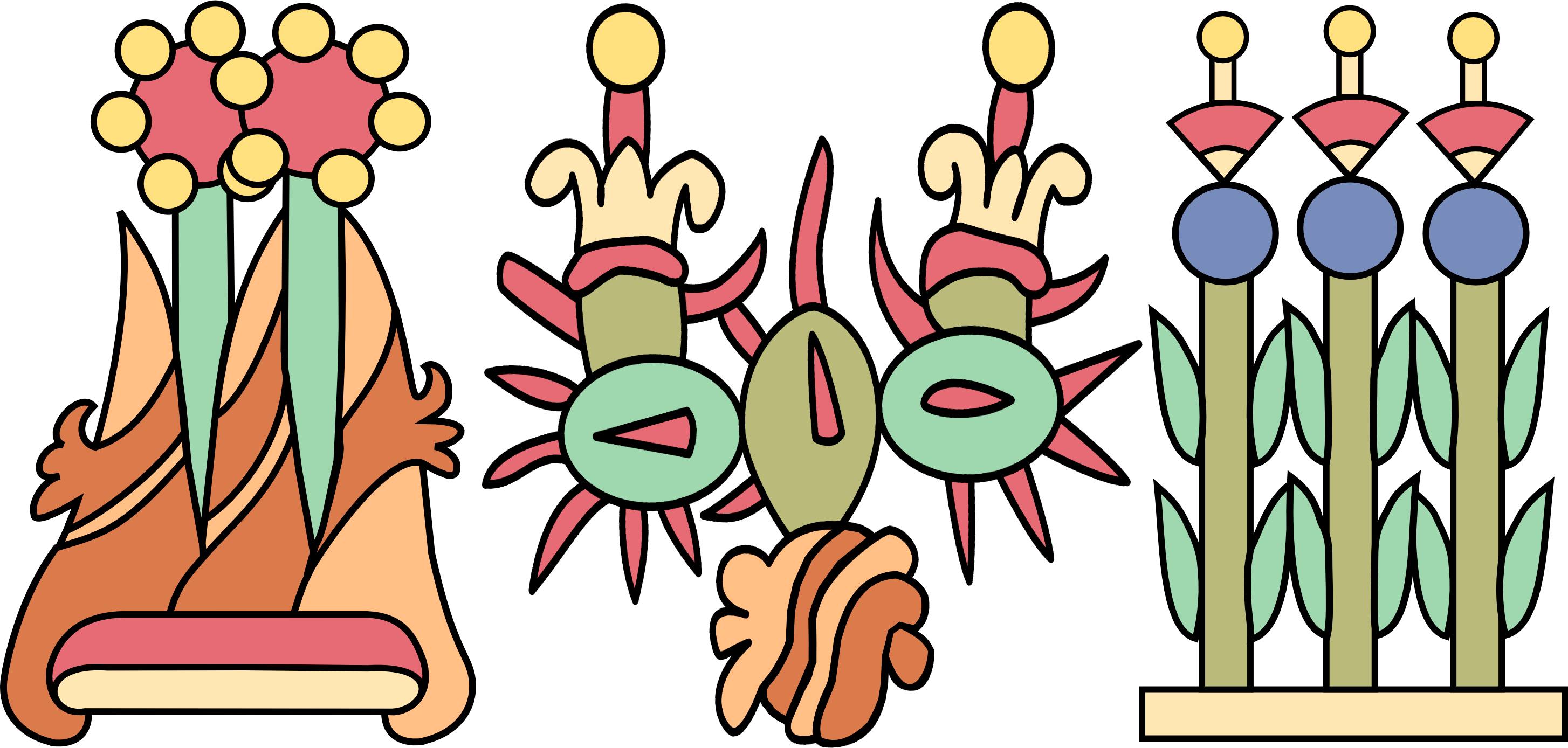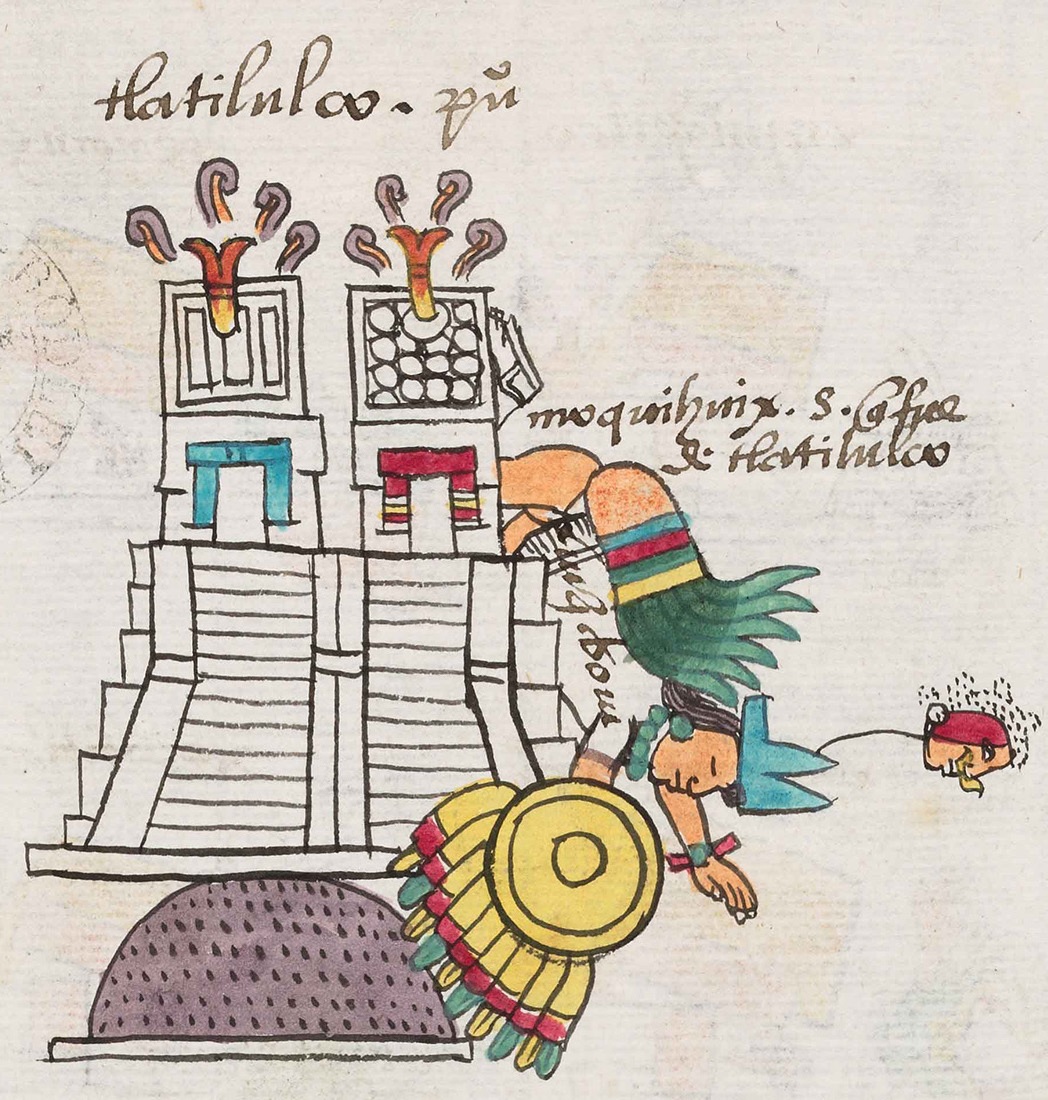Tlatelolco (altepetl) on:
[Wikipedia]
[Google]
[Amazon]
 Tlatelolco ( nci-IPA, Mēxihco-Tlatelōlco, tɬateˈloːɬko, ) (also called Mexico Tlatelolco) was a
Tlatelolco ( nci-IPA, Mēxihco-Tlatelōlco, tɬateˈloːɬko, ) (also called Mexico Tlatelolco) was a

 In 1337, thirteen years after the foundation of Tenochtitlan, the Tlatelolca declared themselves independent from the Tenochca and inaugurated their first independent ''
In 1337, thirteen years after the foundation of Tenochtitlan, the Tlatelolca declared themselves independent from the Tenochca and inaugurated their first independent ''
 Tlatelolco ( nci-IPA, Mēxihco-Tlatelōlco, tɬateˈloːɬko, ) (also called Mexico Tlatelolco) was a
Tlatelolco ( nci-IPA, Mēxihco-Tlatelōlco, tɬateˈloːɬko, ) (also called Mexico Tlatelolco) was a pre-Columbian
In the history of the Americas, the pre-Columbian era spans from the original settlement of North and South America in the Upper Paleolithic period through European colonization, which began with Christopher Columbus's voyage of 1492. Usually, ...
altepetl, or city-state, in the Valley of Mexico
The Valley of Mexico ( es, Valle de México) is a highlands plateau in central Mexico roughly coterminous with present-day Mexico City and the eastern half of the State of Mexico. Surrounded by mountains and volcanoes, the Valley of Mexico wa ...
. Its inhabitants, known as the ''Tlatelolca'', were part of the Mexica, a Nahuatl
Nahuatl (; ), Aztec, or Mexicano is a language or, by some definitions, a group of languages of the Uto-Aztecan language family. Varieties of Nahuatl are spoken by about Nahua peoples, most of whom live mainly in Central Mexico and have small ...
-speaking people who arrived in what is now central Mexico in the 13th century. The Mexica settled on an island in Lake Texcoco
Lake Texcoco ( es, Lago de Texcoco) was a natural lake within the "Anahuac" or Valley of Mexico. Lake Texcoco is best known as where the Aztecs built the city of Tenochtitlan, which was located on an island within the lake. After the Spanish con ...
and founded the ''altepetl'' of Mexico-Tenochtitlan
, ; es, Tenochtitlan also known as Mexico-Tenochtitlan, ; es, México-Tenochtitlan was a large Mexican in what is now the historic center of Mexico City. The exact date of the founding of the city is unclear. The date 13 March 1325 was c ...
on the southern portion of the island. In 1337, a group of dissident Mexica broke away from the Tenochca leadership in Tenochtitlan and founded Mexico-Tlatelolco on the northern portion of the island. Tenochtitlan was closely tied with its sister city, which was largely dependent on the market of Tlatelolco, the most important site of commerce in the area.
History

 In 1337, thirteen years after the foundation of Tenochtitlan, the Tlatelolca declared themselves independent from the Tenochca and inaugurated their first independent ''
In 1337, thirteen years after the foundation of Tenochtitlan, the Tlatelolca declared themselves independent from the Tenochca and inaugurated their first independent ''tlatoani
''Tlatoani'' ( , "one who speaks, ruler"; plural ' or tlatoque) is the Classical Nahuatl term for the ruler of an , a pre-Hispanic state. It is the noun form of the verb "tlahtoa" meaning "speak, command, rule". As a result, it has been variou ...
'' (dynastic ruler). Under the king Quaquapitzahuac (1376–1417), the first two stages of the Main Pyramid of Tlatelolco were constructed. Under Tlacateotl (1417–1428), the Tlatelolca assisted the Tenochca in the war against the Tepanec empire, dominated by Azcapotzalco
Azcapotzalco ( nci, Āzcapōtzalco , , from '' āzcapōtzalli'' “anthill” + '' -co'' “place”; literally, “In the place of the anthills”) is a borough (''demarcación territorial'') in Mexico City. Azcapotzalco is in the northwestern p ...
. Shortly thereafter, the first war between the Tenochca and Tlatelolca erupted. Also during Tlacateotl's reign, the third stage of the Main Pyramid was constructed. Under Quauhtlatoa (1428–1460), the Tlatelolca conquered the city-state of Ahuilizapan (now Orizaba, Veracruz), and fought against the people of Chalco along with the Tenochca. The fourth and fifth stages of the Main Pyramid were constructed in this period. The ruler Moquihuix (1460–1473) constructed the sixth stage of the temple, but in 1473, in the Battle of Tlatelolco, he was defeated by the Tenochca ''tlatoani'' Axayacatl
Axayacatl (; nci, āxāyacatl ; es, Axayácatl ; meaning "face of water"; –1481) was the sixth of the of Tenochtitlan and Emperor of the Aztec Triple Alliance.
Biography
Early life and background
Axayacatl was a son of the princess Ato ...
, and Tlatelolco was made subject to Tenochtitlan. Itzcuauhtzin ruled Tlatelolco during a period in which it was almost completely incorporated into Tenochtitlan.León-Portilla, M. 1992, 'The Broken Spears: The Aztec Accounts of the Conquest of Mexico.'' Boston: Beacon Press,
In his '' Historia verdadera de la conquista de la Nueva España'', conquistador Bernal Díaz del Castillo made several observations regarding Tlatelolco. He opined that its temple was the greatest in all of Mexico. Regarding its marketplace, he wrote that the Spanish "were astonished at the number of people and the quantity of merchandise that it contained, and at the good order and control that was maintained, for we had never seen such a thing before."
During Cortés's siege of Tenochtitlan, the Mexicas would retreat to Tlatelolco, and even achieve a successful ambush against the Spanish conquistadores and their allies, but would ultimately fall along with the rest of the island to Spain
, image_flag = Bandera de España.svg
, image_coat = Escudo de España (mazonado).svg
, national_motto = '' Plus ultra'' ( Latin)(English: "Further Beyond")
, national_anthem = (English: "Royal March")
, ...
. After the completion of the two-year Spanish Conquest of the Aztec Empire in 1521, the Spanish conquerors established the ruins of Mexico-Tenochtitlan as the Spanish capital of New Spain
New Spain, officially the Viceroyalty of New Spain ( es, Virreinato de Nueva España, ), or Kingdom of New Spain, was an integral territorial entity of the Spanish Empire, established by Habsburg Spain during the Spanish colonization of the Am ...
. The remnants of the indigenous populations of Tenochtitlan and Tlatelolco following the conquest were administered by indigenous elites in the incorporated Indian towns of Santiago Tlatelolco and San Juan Tenochtitlan. Tlatelolco remained an important location in the colonial era, partly because of the foundation there, of the school for elite indigenous men, the Colegio de Santa Cruz de Tlatelolco
The Colegio de Santa Cruz in Tlatelolco, Mexico City, is the first and oldest European school of higher learning in the Americas and the first major school of interpreters and translators in the New World. It was established by the Francisca ...
, which was the first school of higher learning in the Americas. Today its remains are located within Mexico City
Mexico City ( es, link=no, Ciudad de México, ; abbr.: CDMX; Nahuatl: ''Altepetl Mexico'') is the capital and largest city of Mexico, and the most populous city in North America. One of the world's alpha cities, it is located in the Valley of ...
.
In the twentieth and twenty-first centuries, archeological excavations have taken place at the Tlatelolco (archaeological site) in what is now part of Mexico City
Mexico City ( es, link=no, Ciudad de México, ; abbr.: CDMX; Nahuatl: ''Altepetl Mexico'') is the capital and largest city of Mexico, and the most populous city in North America. One of the world's alpha cities, it is located in the Valley of ...
. The excavations of the prehispanic city-state
A city-state is an independent sovereign city which serves as the center of political, economic, and cultural life over its contiguous territory. They have existed in many parts of the world since the dawn of history, including cities such as ...
are centered on the Plaza de las Tres Culturas, a square surrounded on three sides by an excavated Aztec
The Aztecs () were a Mesoamerican culture that flourished in central Mexico in the post-classic period from 1300 to 1521. The Aztec people included different ethnic groups of central Mexico, particularly those groups who spoke the Nahuatl ...
site, a 17th-century church called ''Templo de Santiago'', and the modern office complex of the Mexican foreign ministry. In February 2009, the discovery of a mass grave
A mass grave is a grave containing multiple human corpses, which may or may Unidentified decedent, not be identified prior to burial. The United Nations has defined a criminal mass grave as a burial site containing three or more victims of executi ...
with 49 human bodies was announced by archaeologists. The grave is considered unusual because the bodies are laid out ritually.
Notes
Further reading
*''Anales de Tlatelolco, unos annales históricos de la nación mexicana y Códice de Tlatelolco''. Edited by Heinrich Berlin and Robert H. Barlow. Mexico 1948. *Barlow, Robert H. ''Tlatelolco, rival de Tenochtitlan''. Edited by Jesús Monjarás-Ruiz, Elena Limón, and María de la Cruz Paillés Hernández. Mexico City and Puebla 1987. *Castañeda de la Paz, María (2008). "Apropiación de Elementos y Símbolos de Legitimidad entre la Nobleza Indígena. El Caso Del Cacicazgo Tlatelolca." ''Anuario De Estudios Americanos. Directory of Open Access Journals''. *Chimalpahin Cuauhtlehuantzin, Domingo Francisco de San Antón Muñon. ''Codex Chimalpahiin: Society and Politics in Mexico Tenochtitlan, Tlatelolco, Texcoco, Culhuacan, and Other Nahua Altepetl in Central Mexico''. Arthur J.O. Anderson et al. Norman, Oklahoma: University of Oklahoma Press 1997. *Garduño, Ana. ''Conflictos y alianzas entre Tlatelolco y Tenochtitlan''. Mexico City 1998. *Guilliem Arroyo, Salvador. ''Ofrendas a Ehecatll-Quetzalcoatl en Tlatelolco''. Coleccion Científica INAH Num. 400. 1999. Mexico. *Matos Moctezuma, Eduardo. "Tlatelolco" in ''The Oxford Encyclopedia of Mesoamerican Culture'', vol. 3, pp. 230–31. Oxford University Press 2001.See also
* List of Tlatelolco rulers *Codex of Tlatelolco
The Codex of Tlatelolco is a pictorial central Mexican manuscript containing a history of events occurring in Tlatelolco, from before 1550 to after 1564, in the period before and after the Spanish conquest of the Aztec Empire. Due to its name, it ...
* Tzilacatzin
{{DEFAULTSORT:Tlatelolco (Altepetl)
Altepetl
.
Valley of Mexico
History of the Aztecs
14th century in the Aztec civilization
15th century in the Aztec civilization
1500s in the Aztec civilization
1510s in the Aztec civilization
1520s in the Aztec civilization
States and territories established in 1337
States and territories disestablished in the 1470s
14th-century establishments in Mexico
15th-century disestablishments in Mexico
1337 establishments
1473 disestablishments
States and territories disestablished in 1521
1521 disestablishments in Mexico